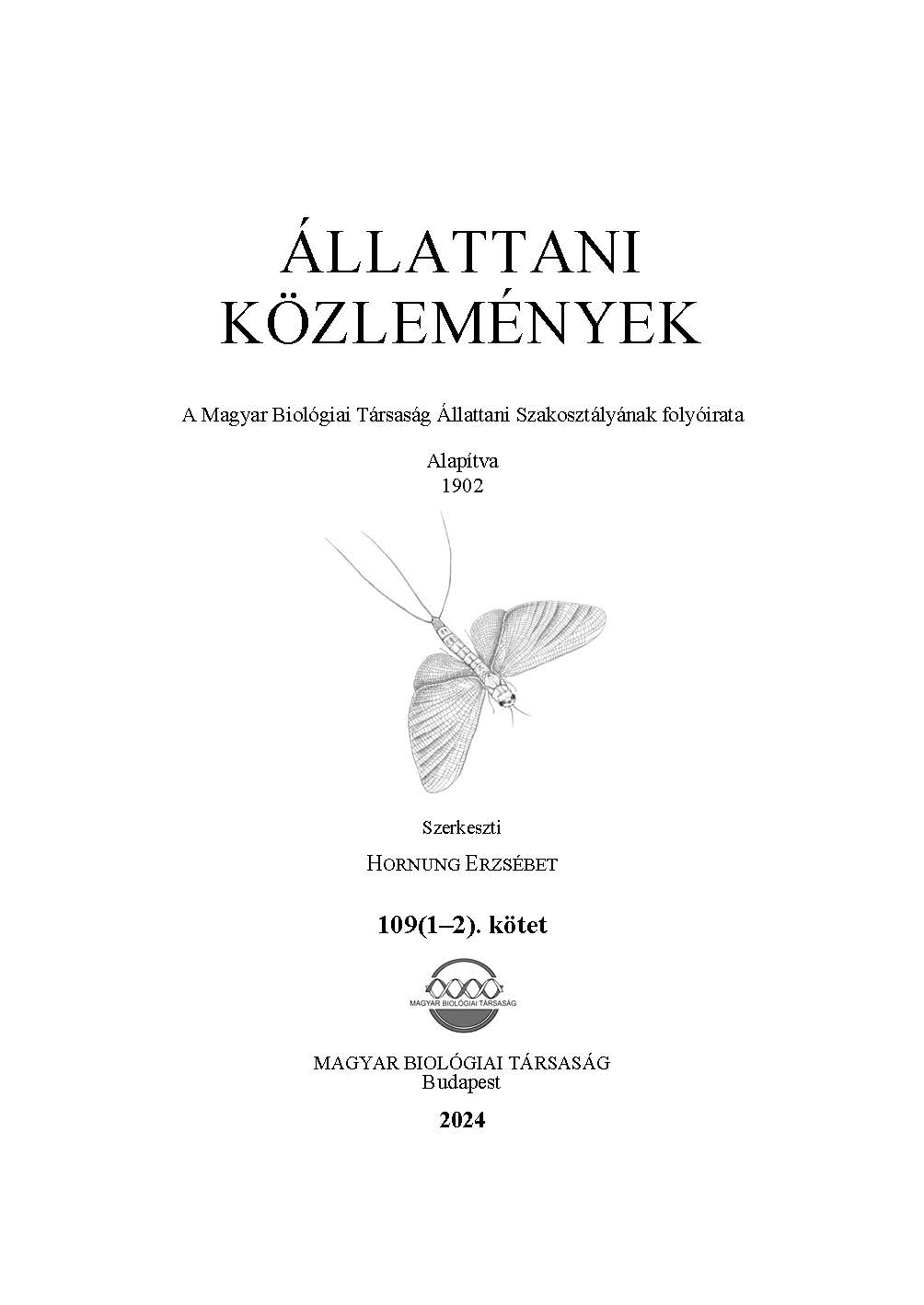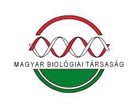Data on fish fauna of the river Ipoly from a reach downstream the Ipolytölgyes dam
Abstract
The dam at Ipolytölgyes is the first water management object on the river which functions as a barrier to the longitudinal moving of fishes swimming upstream from the Danube. The fish fauna was sampled in a 762-metre-long reach next to the dam in mid-September 2023 at baseflow conditions. A total of 25 fish species and an invasive decapod (Faxonius limosus) were detected. Compared to previous original researches, the presence of the Danube ruffe (Gymnocephalus baloni) seems to be a new detection of the species in Ipolytölgyes, and the presences of the Danube streber (Zingel streber) and the zingel (Zingel zingel) support former findings arguing that the lower reach of the Ipoly (in the region of the town of Szob and the village of Ipolytölgyes) is an important habitat of many fish species of conservation interest. Although only presence data and not number of the caught specimens were recorded, high proprotion of the caught fishes belonged to the YOY or juvenile age groups. Particularly, YOY of the barbel (Barbus barbus) were found in remarkable abundance. Results indicate that the gravel-bottomed, rich in gravel pads river reach downstream of the dam provides valuable spawning and nursery habitat not only for populations of fishes living in the Ipoly but also for populations living in the Danube.
References
BÁNYAI ZS. & WEIPERTH A. 2018. A folyami géb (Neogobius fuviatilis), a feketeszájú géb (Neogobius melanostomus) és a cifrarák (Faxonius limosus) terjedése az Ipolyban. Halászat, 111(3): 90–91.
BOTTA I. 1993. A tervezett Duna‐Ipoly Nemzeti Park fontosabb vizeinek ichthyológiai állapot¬felmérése. MMTE, Budapest, 56 pp.
CSIPKÉS R. & SZATMÁRI L. 2011. Adatok az Ipoly magyarországi felső szakaszának és mellék¬patak-jainak halfaunájáról. Pisces Hungarici, 5: 73–82.
FROESE R. & PAULY D. (eds) 2023. FishBase. World Wide Web electronic publication. www.fishbase.org ((utolsó megtekintés: 2023. jún.)
GUTI G. & POTYÓ I. 2010. Az emberi tevékenység hatása a halfauna alakulására az Ipoly alsó (magyar-országi) szakaszán. Tájökológiai Lapok, 8(3): 591–599. https://doi.org/10.56617/tl.4003
GUTI G., SALLAI Z. & HARKA Á. 2014. A magyarországi halfajok természetvédelmi státusza és a halfauna természetvédelmi értékelése. Pisces Hungarici, 8: 19–28.
MARODA Á. & SÁLY P. 2022. Jelenkori és jövőbeni kutatások kapcsolata: halfaunisztikai szakirodalmi áttekintések módszertani nehézségei és az egységes faunisztikai közlés jelentősége. Pisces Hungari-ci, 16: 33–44.
NÉMETH T., BALOGH R.E., BERÉNYI D., FRANYÓ SZ., FERINCZ Á., LENTE V., STASZNY Á., WEIPERTH A. (2022): A cifrarák (Faxonius limosus) téli aktivitásának igazolása hazánk természetes vizeiben. Ha-lászat, 115(3): 18.
POTYÓ I., WEIPERTH A. & GUTI G. 2013. Elektromos halászattal gyűjtött minták napszakos változásai a Duna Budapest feletti szakaszán és egyes mellékvízfolyásaiban. Pisces Hungarici, 7: 57–64.
SALLAI Z. & GYÖRE K. 1997. A Nimfea Természetvédelmi Egyesület halfaunisztikai adatai. Halászat, 90(1): 9–12.
SÁLY P. 2005: A faunakomponens fogalomrendszer. Hidrológiai Közlöny, 85(6): 116–118.
SÁLY P. 2007: A faunakomponens-fogalomrendszer és alkalmazása a halfajegyüttesek természetességé-nek minősítésére. Agrártudományi Közlemények, 25. Pisces Hungarici, 1: 93–101.
SÁLY P. 2023. Alapszemlélet halak biodiverzitásának monitorozásához. Állattani Közlemények, 108(1–2): 57–84. https://doi.org/10.20331/AllKoz.2023.108.1-2.4
WEIPERTH A., BLÁHA M., SZAJBERT B., SEPRŐS R., BÁNYAI Z., PATOKA J. & KOUBA A. 2020. Hungary: a European hotspot of non-native crayfish biodiversity. Knowledge and Management of Aquatic Ecosystems, 421(43). https://doi.org/10.1051/kmae/2020035
WEIPERTH A. 2014. Analysis of structure, composition, spatial and temporal changes of juvenile fish community in a Danube-tributary system in the Middle Danube River Basin. Acta Zoologica Bulga-rica Supplement, 7: 45–50.
WEIPERTH A., BÁNYAI ZS., FERINCZ Á., JUHÁSZ V., SEVCSIK A., STASZNY Á., SZALÓKY Z. & TÓTH B. 2020. Az Ipoly magyarországi szakaszán élő tízlábú rákokra és a halakra vonatkozó faunisztikai ku-tatások áttekintése. Pisces Hungarici, 14: 33–44.







